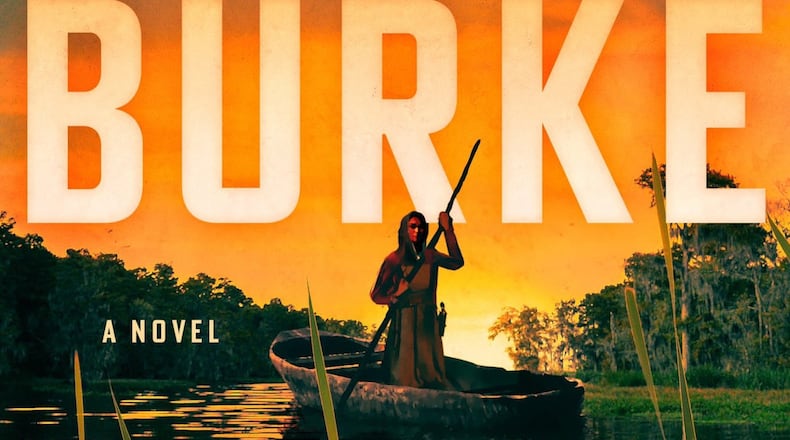The story is told from a number of points of view. One of the characters, an enslaved woman named Hannah Laveau, was on the battlefield at Shiloh with her young son when they got separated. She has been searching for him ever since. In an interview the author told me he derived the inspiration for Hannah straight out of the Bible.
The first character we meet, Wade Lufkin, is a member of a rich land-owning family. He doesn’t like it too much. Before long he gets involved in a duel, suffering a disfiguring facial injury. He’s not the only male character with a monstrous visage. Colonel Carleton Hayes is the leader of a marauding group of soldiers known as Redlegs.
Hayes is a monster. He is unredeemable. His facial disfigurement was caused by disease. His behavior is as repellant as his face. Burke possesses a genius for depicting villains and he has done it again with the loathsome colonel, who was this reviewer’s favorite character.
Pierre Cauchon is a Confederate and one of the more appealing characters. He’s not interested in participating in ongoing atrocities taking place all around him. This region of Louisiana in 1863 is depicted as a lawless zone with chaos surging all around.
Union soldiers committed plenty of violence. We encounter rapacious brigands who have forfeited any claims to human decency. War is like that. During the Civil War, advancements in lethal weaponry served as a prelude to what took place in America after the Confederacy finally surrendered.
Repeating rifles created killing fields. When the smoke cleared on those battlefields, renewed hostilities morphed into racial obliteration out on the Great Plains. In an interview Burke explained that after Union General Sherman’s troops left a swath of destruction throughout the South, Sherman shifted his attention to new conquests.
Sherman knew driving Native Americans off their lands in the West was tied to their main source of sustenance, the massive herds of American Bison. Over the course of just a few decades the millions of buffalo who once darkened the plains were obliterated by passing trains filled with white hunters firing repeating rifles.
In our latest interview Burke didn’t mince words. He described what happened to our indigenous peoples as “genocide.” The foundation for that bloody westward expansion was laid among the still smoldering ashes of our war between the states.
Vick Mickunas of Yellow Springs interviews authors every Saturday at 7 a.m. and on Sundays at 10:30 a.m. on WYSO-FM (91.3). For more information, visit www.wyso.org/programs/book-nook. Contact him at vick@vickmickunas.com.
